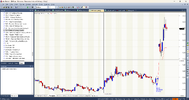- Joined
- 20 July 2021
- Posts
- 13,239
- Reactions
- 18,330
having been offered a margin loan very early in my investing adventure ( by a group named in the Hayne Royal Commission ) i agree investing should be included in that hint1. Never trade or invest with money you can't afford to lose.
Like most worthwhile endeavours typically requires a level of upfront savings. Trading with savings you can "genuinely afford to lose" can help make the process less emotionally charged and, to some degree, more stress-free. However, this ideal scenario is rarely the reality for most. The crucial consideration is to ensure that savings allocated to trading do not jeopardise your financial stability or disrupt your current standard of living.
the other trap is investing with next month's bill payments hoping the divs. will arrive on time ( i nearly got caught with that mid 2020 )
Point 1 I really don't agree with - in relation to investing as opposed to 'trading'. Most Australians begin investing from the first day of their first job via a Super Fund. You don't have to be an investment expert as the funds you invest in are run by professionals.
sorry i disagree , i see Super as a forced savings plan , after being inflicted two amazing ( sarcasm ) funds i am not so sure what they were professionals at , but they absolutely convinced me to go 'hands on ' with my nest egg
but lose they might .. bank foreclosure , forced resumption , fire , floodSimilarly, a lot of Australian buy investment houses - hardly something they 'can afford to lose'.
when someone tells me 'as safe as houses ' i get ready for a con spiel ( remember i played truant on the race-tracks )
future investors should understand even bank/term deposits carry the risk of capital loss ( sure that percentage might be tiny , but it is there )So the statement about only investing money you can afford to lose implies pretty much no one should even start.
so the real question is about risk tolerance ( even bars of gold 'under the floor boards ' have a risk of being stolen )





